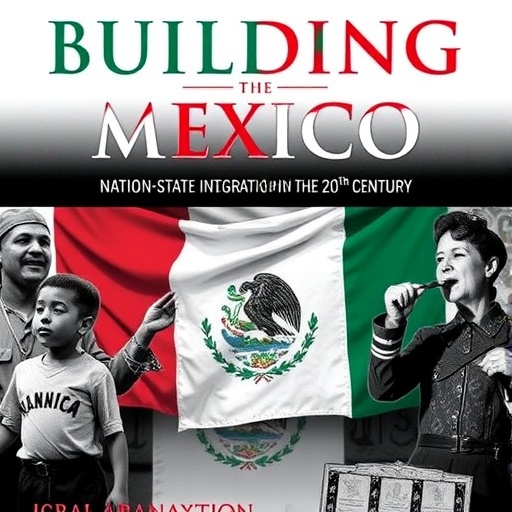In the intricate tapestry of Latin American history, the 20th century emerges as a defining era for Mexico’s nation-state formation. Recent scholarly analysis by Q. Zhang, published in the International Journal of Anthropology and Ethnology, provides an in-depth examination of the multifaceted processes that drove the integrated construction of the Mexican nation-state throughout this tumultuous century. This comprehensive study delves into the social, political, and cultural frameworks that influenced Mexico’s evolution from fragmented regional entities into a cohesive, centralized nation.
At the heart of this transformation lies the complex interplay between longstanding indigenous identities and the burgeoning modernist ideologies introduced during and after the Mexican Revolution. Zhang’s research meticulously tracks how the interplay of regional diversity and central authority shaped Mexico’s modern identity. The integration of sub-national identities with a unified national framework was not a spontaneous historical event but rather a continuous, deliberate process of negotiation and accommodation among competing interests.
The revolution of 1910 marks a critical juncture in Mexico’s national formation. It signified not only a broader political upheaval but a fundamental recalibration of social contracts within the country. Post-revolutionary Mexico embarked on an ambitious project to institutionalize national unity through the creation of centralized bureaucratic structures, education reforms, and cultural nationalism. Zhang’s work highlights how this state-driven consolidation was instrumental in weaving diverse ethnic and regional communities into a collective Mexican identity, while simultaneously negotiating the delicate balance of inclusion and control.
A crucial aspect of the integrated nation-state building was the mobilization of cultural symbolism. The government strategically deployed indigenous motifs, folklore, and national heroes to craft a unifying narrative that transcended regional and ethnic cleavages. Zhang’s article provides a detailed analysis of how these symbolic politics functioned as tools for fostering allegiance to the nascent nation-state, effectively embedding a shared cultural imagination into the public consciousness.
From a technical perspective, the methodological approach in Zhang’s study combines anthropological fieldwork, historiographical review, and ethnological theory. This interdisciplinary lens enables an examination not only of policy documents and state archives but also of lived experiences and localized cultural expressions. This approach exposes the tensions and accommodations between the center and periphery, demonstrating how localized resistance and adaptation played a significant role in shaping the contours of the Mexican nation-state.
Furthermore, the research underscores the importance of education as a mechanism for integration. Post-revolutionary educational reforms emphasized the teaching of national history and culture as a means of fostering patriotism and civic responsibility. Zhang’s detailed account of curriculum changes and pedagogical strategies reveals how education served as a fertile ground for cultural homogenization, while also providing some space for acknowledging Mexico’s indigenous heritage.
Zhang also engages with the political dimensions of nation-building, especially the role of the Institutional Revolutionary Party (PRI), which dominated Mexican politics for most of the 20th century. The party’s adaptive strategies allowed it to maintain hegemonic power by incorporating diverse social groups and co-opting potential sources of dissent. Zhang’s analysis reveals the PRI’s dual function: as an agent of integration and as a political monopoly that constrained genuine pluralism.
Key to the success of Mexico’s integrated nation-state project was the balancing act between centralization and regional autonomy. Zhang’s extensive research illustrates how the federal system managed to accommodate local governance needs while reinforcing the supremacy of national institutions. This balance helped prevent fragmentation and fostered political stability, crucial for Mexico’s eventual economic development and modernization.
The article also explores the impact of infrastructural expansion and modernization on nation-building. Transportation networks, communication technologies, and urban development connected previously isolated regions, enabling the flow of goods, people, and ideas. Zhang’s empirical data demonstrate how these material developments facilitated social integration and the diffusion of national ideologies.
Noteworthy is the role of indigenous groups in Mexico’s nation-state construction. Contrary to previous narratives that marginalized these communities, Zhang’s research positions them as active actors in negotiating their place within the nation. Their participation challenged monolithic conceptions of national identity and compelled the state to accommodate a pluralistic vision of Mexican society.
Zhang’s work extends to the late 20th century, analyzing how neoliberal economic policies and democratization efforts affected the nation-state’s cohesion. Globalization pressures and internal sociopolitical shifts introduced new challenges to the integrated model, prompting renegotiations of identity and governance that persist today.
The study’s technical depth is matched by its narrative clarity, offering readers a nuanced understanding of nation-state formation as a dynamic, contested, and ongoing process. Zhang combines historical events with anthropological insights to unpack the mechanisms behind Mexico’s unified identity while revealing the enduring complexities embedded in this process.
For scholars and enthusiasts of political anthropology, this article provides critical reflections on how cultural policies, political institutions, and social movements converge in state-building efforts. It also reaffirms the importance of considering local agency and cultural diversity in understanding national integration in a global context.
The implications of this research extend beyond Mexico, offering comparative frameworks for analyzing nation-building in other multicultural societies facing similar challenges. Zhang’s study encourages a reconsideration of linear, top-down models of nation-state formation, advocating instead for a multidimensional perspective that embraces contested identities and hybrid practices.
In sum, Zhang’s investigation into the integrated Mexican nation-state during the 20th century is a landmark contribution that blends empirical research with theoretical innovation. It deepens our comprehension of how states are crafted not only through political power but through cultural synthesis, social negotiation, and economic transformation—a narrative as relevant today as it was a century ago.
Subject of Research: Mexican nation-state building and integration in the 20th century
Article Title: The integrated Mexican nation-state building in the 20th century
Article References:
Zhang, Q. The integrated Mexican nation-state building in the 20th century. Int. j. anthropol. ethnol. 8, 17 (2024). https://doi.org/10.1186/s41257-024-00119-1
Image Credits: AI Generated




